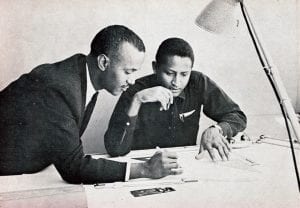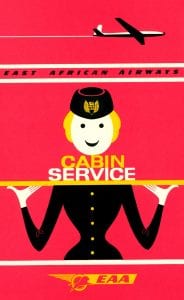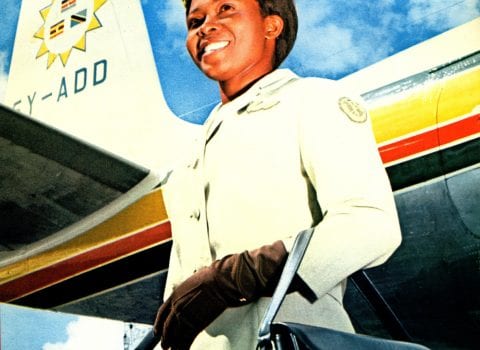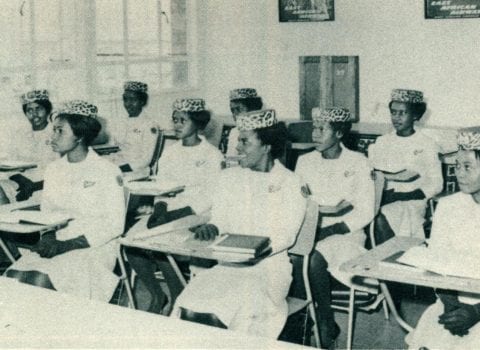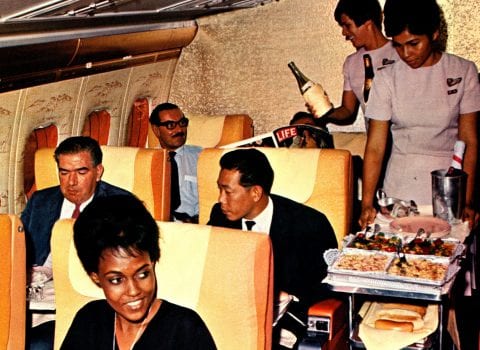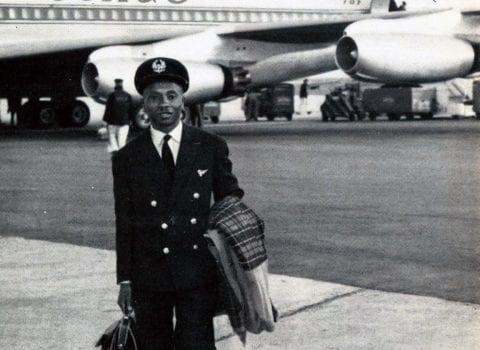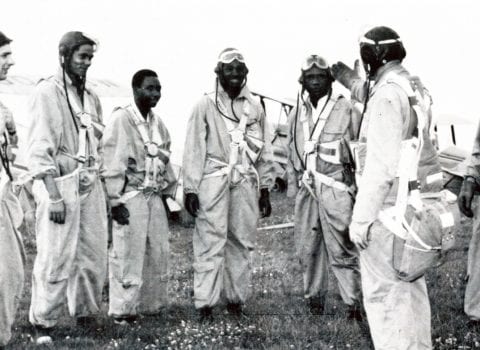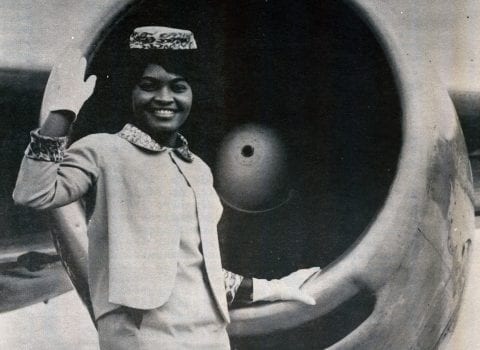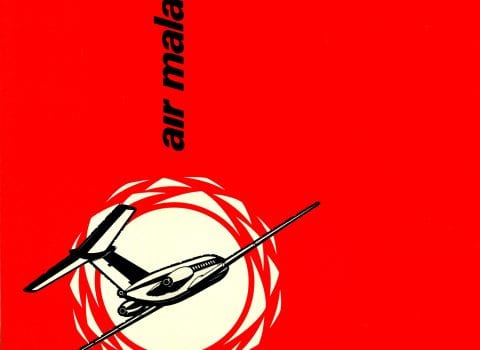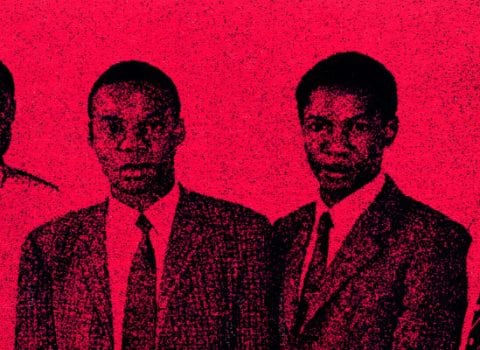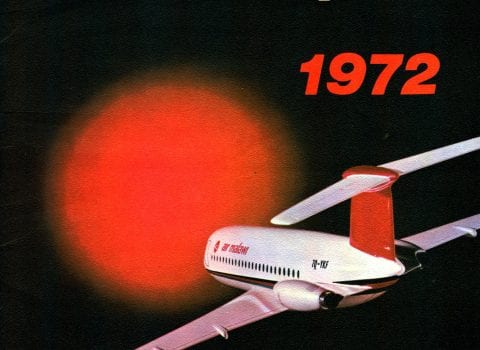People
A key part of airline operations in the era of independence, reflected throughout company reports, was Africanization. National pride stemmed not only from having flag-carrying airlines, but also from seeing one’s own countrypeople operating the airline at all levels: airlines recruited, trained, and offered apprenticeships for a variety of positions including flight attendants, engineers, pilots, sales, and executive positions. This was the case not only with the airlines of newly independent nations in the 1960s, but also with airlines established before this era by independent nations, such as Ethiopian Airlines, which stated in the airline’s celebratory 25th anniversary brochure, published in 1970: “Ethiopianisation at the fastest possible rate compatible with the needs of a modern airline has always been an integral part of the airline’s policy.”
Engineers from Ethiopian Airlines 1971 annual report
East African Airways
East African Airways had its origins in 1946, a partnership between what were at the time the territories of Kenya, Tanganyika, Uganda, and Zanzibar, and British Overseas Airways Corporation (BOAC). For the next 18 years, the airline was owned by the colonial governments, with operational assistance from BOAC. During this period, the airline presented a European face to the world, in its annual reports and passenger ephemera such as the airline’s 1961 menu.
East African Airways menu, 1961. Transportation Library Menu Collection.
By 1963, the last of the East African nations had achieved independence and the airline began an era of Africanization. Pilots, engineers, flight attendants, and management were recruited and trained from the member countries of Kenya, Tanzania, and Uganda. The airline’s 1964 annual report reported additional training for airline stewards and stewardesses. By the end of 1964, European management of the airline was ended, and the airline came under the operational management of directors from the newly independent East African nations. This continued until the airline’s dissolution in 1977 at which point Kenya Airways, Air Tanzania, and Uganda Airlines had all formed as independent national carriers.
Images via East African Airways 1965 and 1966 Annual Reports
Air Congo
In July of 1961, Air Congo became the national airline of the newly independent nation of the Democratic Republic of the Congo, replacing the Belgian operator Sabena just one year after the country achieved its independence. Working in partnership with the Belgian airline and others in its early years, Air Congo’s Board of Directors immediately embarked on an extensive training program with an emphasis on promoting personnel throughout the country, with a goal of Congolese representation in all positions across the airline, particularly at the pilot and executive officer levels. This program was highlighted in its annual report alongside pilot training classes and photographs of employees at the pilot, flight attendant, and administrative levels.

Images via Air Congo 1961-62 and 1968 Annual Reports
Air Malawi
Air Malawi was established in 1964, the same year Malawi attained its independence from the United Kingdom. Initially, the airline operated as a subsidiary of Central African Airways, and later in the decade became the independent national airline of Malawi. The airline quickly set about the task of training and promoting Malawians to leadership positions, including sending pilot trainees overseas and training engineers at home. In 1972, the airline also established a training division to advance these efforts, introducing classroom training in the commercial, operations, accounts, and engineering divisions.
Images via Air Malawi 1970 and 1972 Annual Reports
More Information
Items in the exhibit are housed at Northwestern University’s Transportation Library and the Herskovits Library of African Studies. Email transportationlibrary@northwestern.edu or africana@northwestern.edu with questions, or to schedule an appointment.

